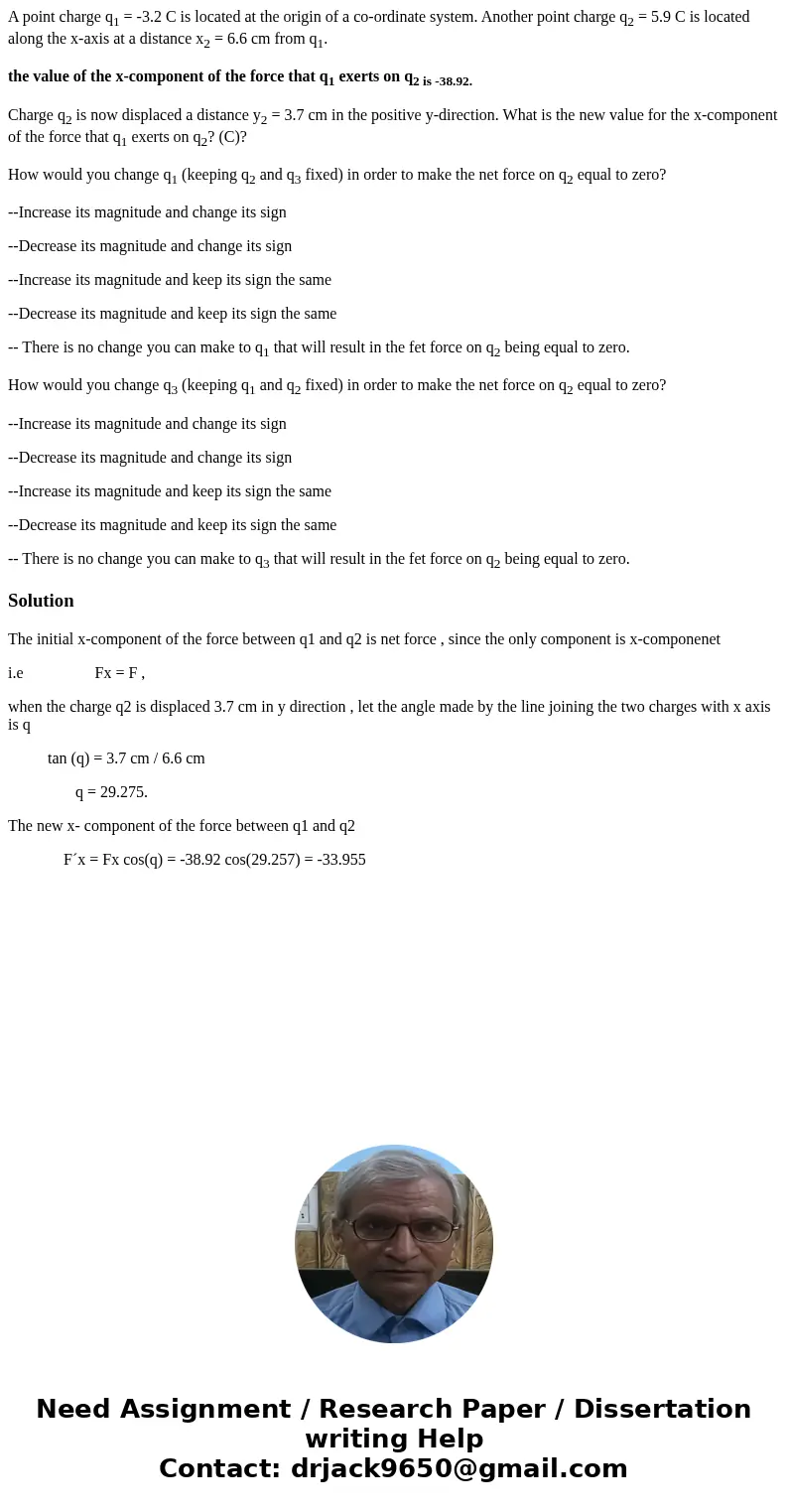A point charge q1 32 C is located at the origin of a coordi
A point charge q1 = -3.2 C is located at the origin of a co-ordinate system. Another point charge q2 = 5.9 C is located along the x-axis at a distance x2 = 6.6 cm from q1.
the value of the x-component of the force that q1 exerts on q2 is -38.92.
Charge q2 is now displaced a distance y2 = 3.7 cm in the positive y-direction. What is the new value for the x-component of the force that q1 exerts on q2? (C)?
How would you change q1 (keeping q2 and q3 fixed) in order to make the net force on q2 equal to zero?
--Increase its magnitude and change its sign
--Decrease its magnitude and change its sign
--Increase its magnitude and keep its sign the same
--Decrease its magnitude and keep its sign the same
-- There is no change you can make to q1 that will result in the fet force on q2 being equal to zero.
How would you change q3 (keeping q1 and q2 fixed) in order to make the net force on q2 equal to zero?
--Increase its magnitude and change its sign
--Decrease its magnitude and change its sign
--Increase its magnitude and keep its sign the same
--Decrease its magnitude and keep its sign the same
-- There is no change you can make to q3 that will result in the fet force on q2 being equal to zero.
Solution
The initial x-component of the force between q1 and q2 is net force , since the only component is x-componenet
i.e Fx = F ,
when the charge q2 is displaced 3.7 cm in y direction , let the angle made by the line joining the two charges with x axis is q
tan (q) = 3.7 cm / 6.6 cm
q = 29.275.
The new x- component of the force between q1 and q2
F´x = Fx cos(q) = -38.92 cos(29.257) = -33.955

 Homework Sourse
Homework Sourse